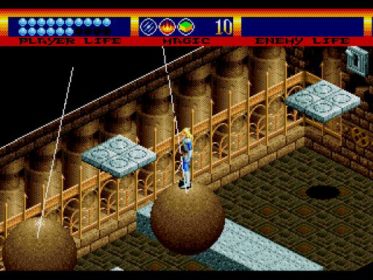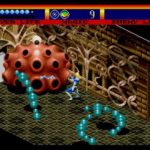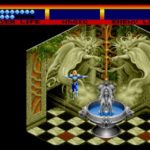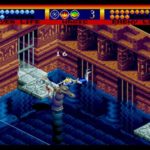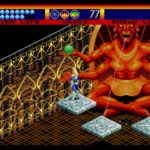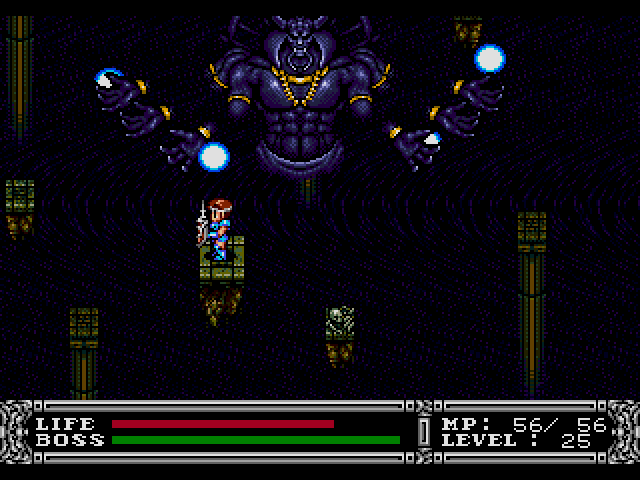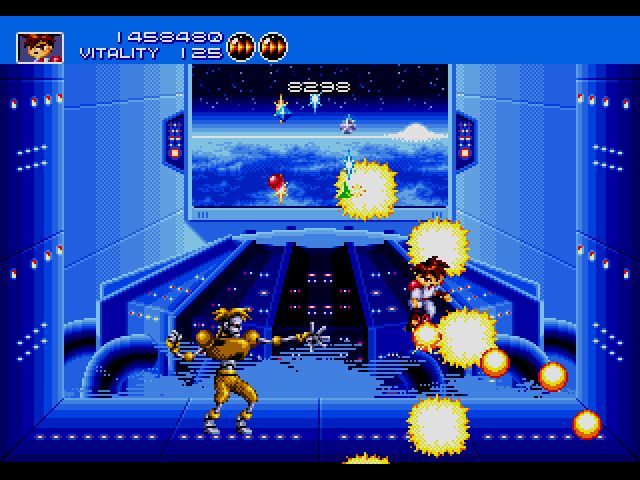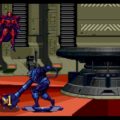Developer: Treasure Publisher: Sega Released: 1995 Genre: Action Rpg
Throughout Treasure’s long and storied history they have created many a legendary action and shooting game. They have only occasionally dabbled in other genres. The one genre they have almost completed avoided is the RPG with Light Crusader being their lone example. If you blinked it was easy to miss as Sega did little to promote its existence. The game certainly has its unique charms like many of Treasure’s other works however in this case there are many smaller flaws that bring the game down. Despite its faults Light Crusader is still a solid game and worth checking out.
You are David, a knight in the employ of King Frederick. Upon returning to your home village of Green Row you can immediately sense that something is amiss. The King informs you that people have been disappearing and sends you on a quest to find out what is going on. The premise is generic and unfortunately the story sees only brief elaboration as you progress. It’s just enough to keep you going but that is all. It’s also disappointing that you do not get to explore the world more since the game uses a European medieval style rather than the anime inspired fantasy most Japanese games employ.
Like Landstalker Light Crusader is played from an isometric perspective. Unlike that game you won’t have to worry about nightmarish platforming or any of the other annoyances it brought to the table. You have free movement within the environment rather than the strict grid based system typical of the genre. It is incredibly freeing but also brings its fair share of frustrations which I’ll explain in a bit. The RPG elements are actually minimal overall. You can buy and sell equipment and items but I’ll wager most will never bother. Every single item you’ll need can be found in the game’s single expanding dungeon. This follows the Zelda model of “stat” upgrades as there is no experience point system. Instead your life bar increases by defeating bosses or finding maximum HP upgrades.
Streamlining the typical RPG mechanics lends the game an almost arcade feel which is born out through the game’s pacing. Unless the game expressly forces you to kill all enemies (“Beat them all’) it’s better to avoid combat since you gain nothing but food or the occasional item. There is also the fact that hit detection is spotty and you have very few moves. Magic is interesting but ultimately a forgettable addition. There are other problems though. The free movement combined with the camera angle makes judging the distance from enemies a very aggravating experience. Most isometric games used grid based movement to make it easier to line up enemies and objects. Here it’s all over the place and feels really amateurish. Dealing with the more aggressive enemies such as the late game mages and especially bosses is a nightmare.
The controls make the environment based puzzles which comprise the majority of the game more of a hassle than they should be. Nearly every loose object can be pushed around and arranged as you see fit. In this regard puzzle solving is extremely fluid. But the game’s touchy physics nearly undermine that. Even the slightest tap can completely ruin a setup you’ve been working on for close to ten minutes.
While I’ve harped on the negatives it doesn’t mean the game is bad or completely broken. It’s just that this is a game of extremes. When everything is working it is incredibly enjoyable. There are some incredibly clever puzzles strewn throughout, some that require a great deal of thought and others that are deceptively simple. The game can be a bit too clever at times as its more exotic puzzles rely on deciphering incredibly cryptic hints. It is the moments where all of the problems I’ve described occur all at once that you’ll wonder if it is all worth it. Personally I found the game’s highs outweigh its lows.
Overall I found Light Crusader easy despite the scarcity of save points. Nearly every enemy drops food and you can set it up so that food is consumed automatically once your health dips low. With so much food I found it easier to simply run across spikes in most cases than attempting elaborate platforming. You can easily avoid combat and it isn’t until the later stages of the game that truly powerful enemies appear. While some of the bosses look intimidating outside of the last two you can easily bum rush all of them with success. The arcade style sensibility extends to the game’s length; the game is around five hours total. If you can push blocks like a master you’re golden. In spite of that the length seems appropriate.
Treasure knew their way around the Genesis hardware and some of that expertise is on display here. The western styled fantasy art gives the game an exotic atypical of console RPGs back then. Despite the repetition in the backgrounds overall they look fantastic with excellent use of the system’s color palette. The character sprites have realistic proportions if a bit lanky. The bosses are of the multi-jointed type Treasure specialized in and look superb although I wish there were more of them. Special effects are minimal surprisingly with the only standout being the polygonal objects throughout the game. Although the game takes place in a single dungeon without spoiling anything the late portion of the game does take you to other areas if only briefly.
In Conclusion
Light Crusader has its share of faults but in the end it still manages to be compelling. The game is dirt cheap at this point and definitely worth checking out.


